A quality garment is a combination of four key factors: fabric, craftsmanship, tailoring, and brand. Let’s delve into each aspect to help you make informed clothing choices.
Fabric Grades
The quality of fabric plays a significant role in the overall quality of a garment. Here’s a breakdown of fabric grades:
Low-grade fabrics:
- Synthetic fibers: These are man-made fibers like polyester and nylon. While they are durable and wrinkle-resistant, they may not be as breathable or comfortable as natural fibers.
Common fabrics:
- Cotton and linen: These natural fibers are breathable, absorbent, and generally comfortable. However, they may wrinkle and shrink more easily than other fabrics.
Mid-grade fabrics:
- Rayon, Lyocell, and Tencel: These are semi-synthetic fibers derived from natural sources like wood pulp. They offer a blend of the benefits of both natural and synthetic fibers, such as breathability, drape, and wrinkle resistance.
- Blended fabrics: Combining natural and synthetic fibers can create fabrics with enhanced properties. For instance, cotton-polyester blends offer durability and wrinkle resistance while retaining some breathability.
- Silk: This luxurious natural fiber is known for its softness, drape, and luster. However, it is delicate and requires special care.
- Leather: Genuine leather is a durable and versatile material, but its quality varies depending on the type and grade.
High-grade fabrics:
- Wool and cashmere: These natural fibers are prized for their warmth, softness, and breathability. Cashmere, in particular, is exceptionally soft and luxurious.
- Premium leathers: Full-grain leather is the top grade, offering the highest quality and durability. Other high-grade leathers include top-grain corrected and split-grain.
- Fur: While animal fur is a contentious issue, certain furs like fox are considered high-grade due to their rarity and luxury appeal.
Silk
Silk, a natural fiber known for its elegance and comfort, requires careful consideration when making a purchase. Here are some key points to remember:
Momme: This unit measures silk’s thickness. A higher momme count indicates heavier, more durable silk. For instance, Hermès scarves are often made from 18mm twill silk.
Double-faced silk: This luxurious fabric features the same pattern and finish on both sides, reflecting its higher production cost.
Silk velvet: This fabric is characterized by its soft, plush pile and luxurious drape.
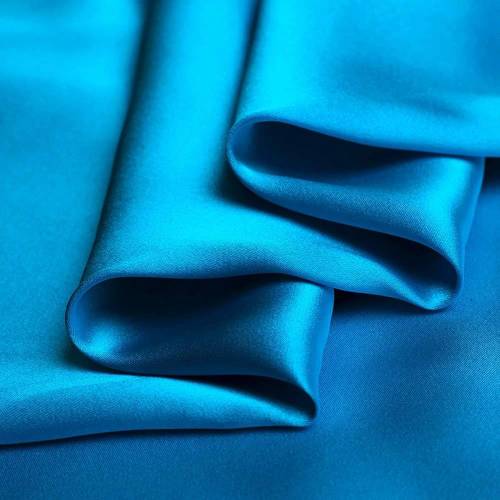
Authenticity tests:
- Burning: Genuine silk emits a protein-like odor when burned.
- Luster: Real silk has a natural sheen that synthetic imitations cannot fully replicate.
- Touch: Silk feels smooth and cool to the touch.
Cotton
Cotton, a versatile and widely used natural fiber, comes in various grades. Here’s how to identify high-quality cotton:
Yarn count: This measure indicates the fineness of the cotton threads. A higher yarn count, such as 80 or above, generally signifies softer, more comfortable fabric.
Fabric density: This refers to the tightness of the weave, influencing durability. A denser weave typically indicates a more durable fabric.
Combed cotton: This type of cotton has undergone an extra processing step to remove impurities, resulting in a smoother, more lustrous finish.
Egyptian cotton: Often referred to as “white gold,” Egyptian cotton is known for its exceptionally long fibers, contributing to its softness, durability, and luxurious drape.
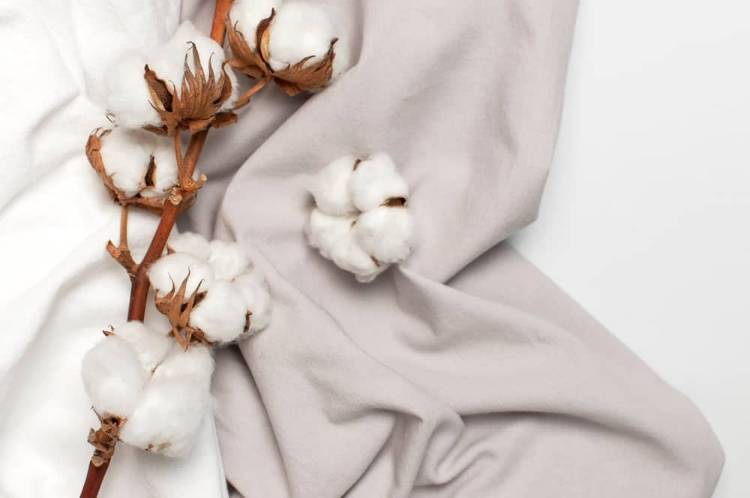
Authenticity tests:
- Burning: Genuine cotton burns cleanly and leaves a soft, ashy residue.
- Luster: High-quality cotton has a subtle sheen.
- Touch: Real cotton feels soft and smooth against the skin.
- Translucency: Hold the fabric up to light. High-quality cotton will have minimal translucency.
Wool and Cashmere
Wool and cashmere, both derived from animals, are prized for their warmth, softness, and breathability. Here’s how to distinguish between them: Wool comes from sheep, while cashmere is derived from goats. Cashmere is often referred to as “soft gold” due to its exceptional softness and warmth.
Quality assessment:
- Hand: Feel the fabric for its elasticity. Wool has a solid feel, while cashmere feels airy and light.
- Light inspection: Hold the fabric up to light. Observe the evenness of the texture and translucency.
- Burning test: Burn a small sample of the fabric. Wool emits a burnt hair odor, while cashmere leaves a white ash.

Denim
Denim, a classic fabric derived from cotton fibers, comes in various qualities. Look for these characteristics when evaluating denim:
Feel: High-quality denim should feel soft and slightly damp to the touch. This indicates a comfortable wear experience.
Stretch: Good denim offers some elasticity without losing its shape significantly.
Washes: The washing process determines the denim’s texture and softness. Look for washes that enhance the denim’s character without compromising its quality.
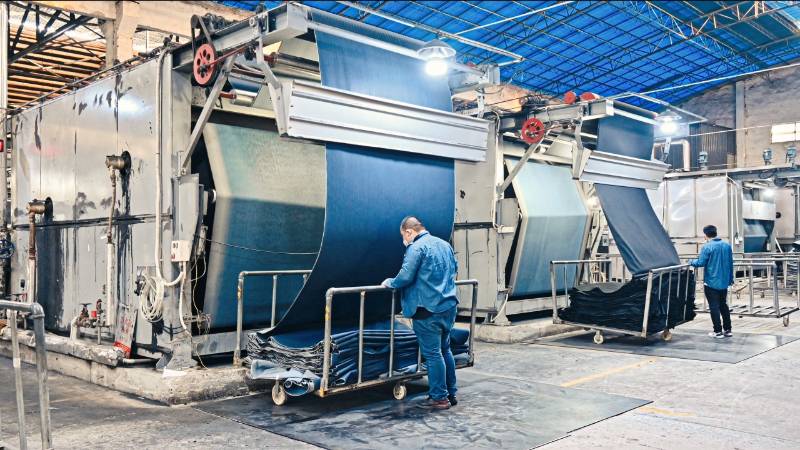
Leather
Leather, a durable and versatile material, varies greatly in quality. Here’s a breakdown of leather grades:
Full-grain leather: This top-grade leather is the most durable and luxurious, featuring a natural grain with slight imperfections.
Top-grain corrected leather: This leather undergoes some surface buffing to remove imperfections, resulting in a more uniform appearance.
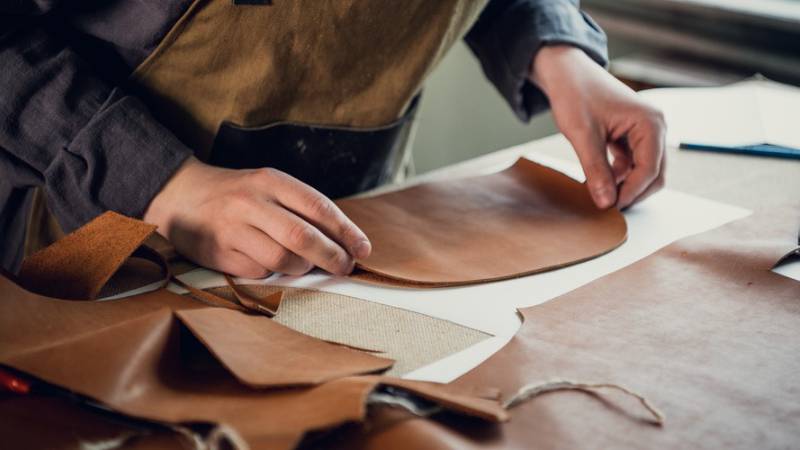
Split-grain leather: This is a lower-grade leather made from the remaining layers after splitting full-grain leather. It is often coated or embossed to resemble higher-grade leather.
Fake leather: This is a synthetic material designed to resemble genuine leather, but it lacks the breathability and durability of real leather. Identifying fake leather can be done by looking for a uniform, machine-made grain pattern.
Regenerated Fibers
Regenerated fibers are a sustainable option derived from natural materials. Here are two commonly encountered regenerated fibers:
Viscose: This breathable and comfortable fiber is often used for linings and lightweight garments. It requires special care similar to silk.
Lyocell (Tencel): This eco-friendly fiber offers superior strength and drape compared to viscose. It is known for its wrinkle resistance and breathability.
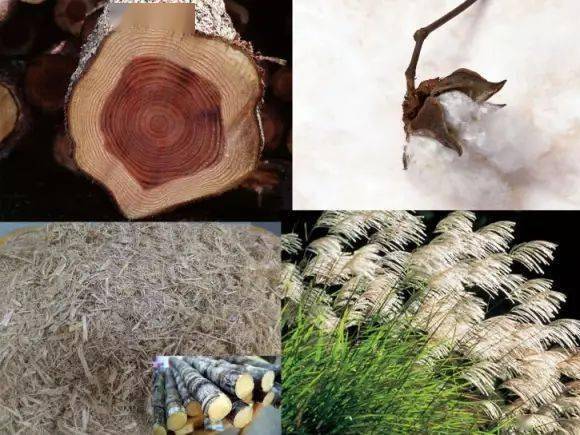
Caring for Regenerated Fibers:
Both viscose and Lyocell require gentle care. Avoid harsh detergents and always check the care label for specific washing instructions.
Synthetic Fibers
Synthetic fibers, like polyester and nylon, offer several advantages like durability, wrinkle resistance, and affordability. However, they can be less breathable than natural fibers. Here’s a breakdown of some common synthetic fibers:
Polyester: This versatile fiber is widely used for activewear and clothing due to its durability and wrinkle resistance. However, it can trap heat and sweat.
Nylon: Known for its strength and elasticity, nylon is commonly found in sportswear, socks, and hosiery. Similar to polyester, it can be less breathable.
Spandex: This highly elastic fiber is used to add stretch and recovery to clothing, especially for activewear and jeans.
Acrylic: This synthetic fiber resembles wool in appearance but can be less breathable and more prone to pilling.
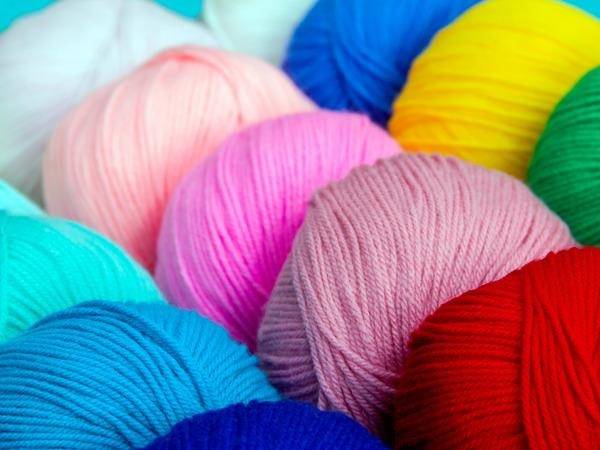
Final Words
When choosing clothing, consider the intended use and desired comfort level. Blends of natural and synthetic fibers often combine the advantages of both.
By understanding the fabric grading system and the properties of different materials, you can make informed choices when purchasing clothes. Invest in quality garments that will not only feel comfortable but also last longer with proper care.
Further Reading:
Hair Wash Mistakes You’re Making (Everyone Does!)
Find Your Perfect Seasonal Color Palette
How to Choose the Best Hairstyle for Your Face Shape?
5 Easy Steps to Create a Flawless Base Makeup
13 Global Renowned Brands & Their Sub-Brands
